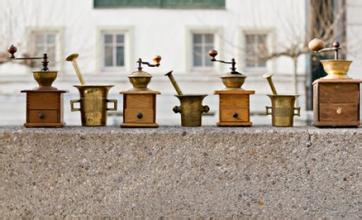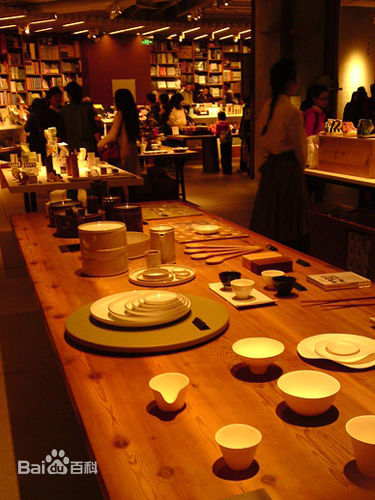[coffee culture] different powders for making espresso are better than Italian super-espresso makers.
Today, what I share with friends is the different powder-to-water ratio of espresso made from all over the world. It is very simple to make espresso, but in the process, various proportions and balances of elements need to be controlled to pursue the best taste and perfect taste. However, mastering these proportions takes a long time to explore and contact, the most important of which is the gouache ratio. Gouache ratio is the ratio of coffee powder to the total weight of coffee. Changes in the weight of coffee powder and the total weight of coffee will greatly affect the taste and taste of coffee.
To master the gouache ratio, you only need an electronic scale, but you don't need much practice. Here, we recommend the use of electronic scales with a minimum unit of 0.1 grams. Through the electronic scale, we can easily grasp the weight of the coffee powder poured into the handle, as well as the total weight of the final coffee, and can ensure that this ratio is permanent and constant.
The traditional method of making espresso (Ristretto) uses a water / flour ratio of 1:1 (i.e. 18 grams of coffee powder is used to make 18 grams of coffee) or 1:2 (i.e. 18 grams of coffee powder is used to make 36 grams of coffee), while a regular espresso uses a water / powder ratio of 1:2 (i.e., "Normale"). Once the water-powder ratio reaches 1:3 or 1:4, it is called "Lungo".
To master the gouache ratio, you can use a constant amount of coffee powder (for example, 18 grams) in the exercise, try to match different total coffee weight, and then compare the differences in taste, purity and mellowness. You need to decide the final gouache ratio according to your personal preference. Only through constant practice and exploration can you make an espresso that really suits you.
People have different taste preferences for espresso in different countries of the world. Even in the same country, the proportion of gouache used in different cafes varies. Although espresso is not the oldest coffee drink, it has become an important part of each country's culture, so each country's use of gouache ratio is unique.
For example, if you walk into the VivaceEspresso coffee shop in Seattle, USA, you usually get a cup of espresso with a gouache ratio of between 1:1 and 1. 5. The coffee shop's founder, DavidSchomer, was a pioneer in the Italian espresso industry at the time, bringing the coffee to the northwestern United States for the first time. Italian espresso is extremely strong and thick, but lacks purity and dryness. Extremely low gouache ratio, coupled with deep-roasted, low-altitude grown coffee beans, the resulting coffee chocolate and caramel flavor is very strong. When Xiao Mo first introduced this kind of coffee to the United States, Americans still drank coffee with milk. This very strong espresso brings a new coffee experience to the local people.
As light-roasted, high-altitude coffee has become more popular in the past few years, the proportion of water popular on the market has also changed. Today, coffee shops in the United States, Europe and Australia are accustomed to using the gouache ratio of "Normale" espresso (1purl 1.5 or 1:2). As more coffee shops use individual coffee to make espresso, there is also a higher demand for gouache ratio. Increasing the gouache ratio can improve the purity and dryness of coffee and make lightly roasted coffee beans grown at high altitude easier to extract.
Of course, when it comes to espresso, we have to mention the hometown of the espresso machine. If you have ever visited Italy, you must have been to an Italian espresso. To your surprise, the gouache ratio used by the locals is usually around 1:3. This traditional recipe has been around for a hundred years. Therefore, while most countries in the United States and Europe use 16-19 grams of coffee powder to make 24-38 grams of coffee, Italians prefer to use 7 grams of coffee powder to make 21 grams of espresso.
The coffee industry has undergone earth-shaking changes in the past few years, so people's understanding of Italian espresso is constantly changing. Some baristas and industry insiders are constantly exploring ways to make "Lungo" espresso and increasing the gouache ratio to 1:4 or higher. With the continuous increase in the proportion of gouache, the purity of coffee continues to improve, the taste and consistency of coffee continue to decrease, and the unique taste of coffee can be better reflected. This gouache ratio is similar to the traditional drip filter coffee and is becoming more and more popular in boutique coffee shops.
MattPerger, from the St.Ali Cafe in Australia, has been pursuing and studying high gouache ratios for the past few years, and at one point tried to make espresso with gouache ratios at 1:17. This method of making is very rare, but it can well reflect the popular trend in the coffee industry today. We are constantly innovating the definition of espresso and our understanding of the use of espresso machines, and our ultimate goal is to make more delicious espresso.
Each cup of coffee is unique, and the gouache ratio you use will change according to the variety of coffee. But as long as you know how to find the best gouache ratio, you will certainly be able to make the most delicious espresso according to your preferences!

Important Notice :
前街咖啡 FrontStreet Coffee has moved to new addredd:
FrontStreet Coffee Address: 315,Donghua East Road,GuangZhou
Tel:020 38364473
- Prev

The coffee smell under the red brick iron pipe in the coffee shop of the red brick factory, the coffee shop of industrial style is setting off a trend!
Break the impression of the city cafe with red brick walls, metal furniture, cement floors and exposed pipes. Combined into a cold cast iron atmosphere; or simple tungsten light bulbs, industrial lighting with patchwork of wood, also good taste! These cafes, which prefer simple lines and give priority to function, are setting off an upsurge in the coffee industry! A large number of boutique cafes have emerged in the market.
- Next

World-famous individual coffee beans and their origin China Coffee net China Coffee Trading Network Latin America
Introduction] Latin American coffee beans (Central and South America) middot; Brazil: Santos (Santos), Bahia (Bahia), Syrador (Cerrado), Mojiana (Mogiana) middot; Mexico: Coatepec, Huatusco, Orezaba (Orizab Latin American coffee beans (Central and South America) Brazil
Related
- Guji coffee producing area of Guji, Ethiopia: Humbela, Shakiso, Wulaga
- What is the most expensive variety of Qiloso in BOP multi-variety group?
- How to store the coffee beans bought home?
- Why are Yemeni coffee beans so rare now?
- Ethiopian Sidamo all Red Fruit Sun Sun Santa Vini Coffee beans
- SOE is mostly sour? What does it mean? Is it a single bean? what's the difference between it and Italian blending?
- Is Italian coffee beans suitable for making hand-brewed coffee?
- How to choose coffee beans when making cold coffee? What kind of coffee beans are suitable for making cold coffee?
- Just entered the pit to make coffee, what kind of coffee beans should be chosen?
- Can only Japan buy real Blue Mountain Coffee? What are authentic Jamaican Blue Mountain coffee beans?

